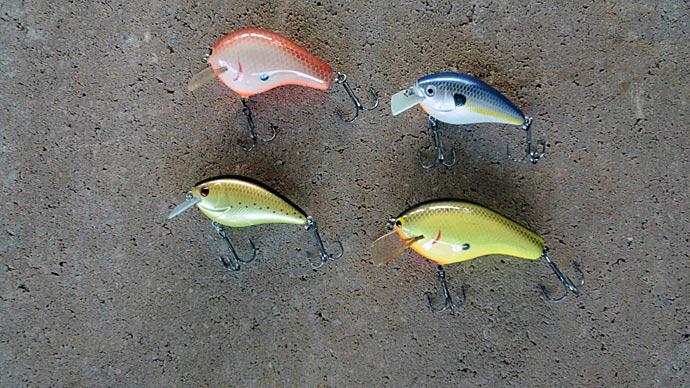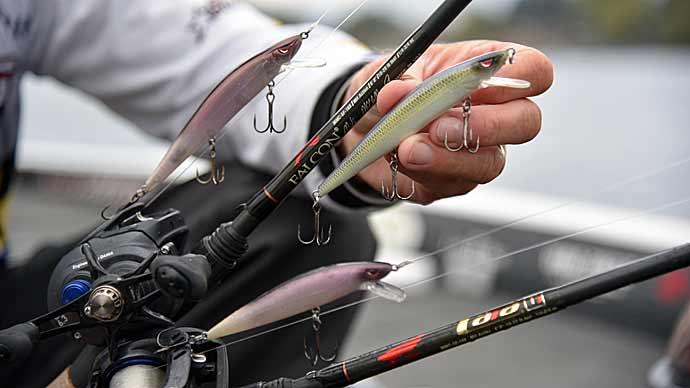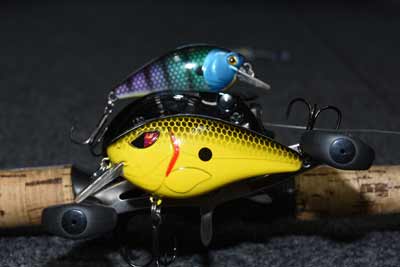
When you're talking Springtime bass, do you have a confidence bait for finding bass? For many years, bass fishermen have turned towards spinnerbaits to fill this role, but I have changed my thoughts a little on this pick throughout the year. For me, the bait that I now turn towards to help me find early season bass is a square bill crankbait. Let’s take a closer look at today’s square bills and set forth a few points to help you put more bass in your boat this Spring.
To start, take a good long hard look at the square bill market as these baits have multiplied over the years. Every crankbait company has added their baits to this category, and some are worth a look. I'll let you be the judge when it comes to the brand of baits that you stock in your box.
Square Bills Sizes And Sound
First, let us start with size and sound. I carry two different sizes of square bills in my box as I have had many occasions where the bass flat out preferred one size over the other. When looking for signs of bass, I'll have a smaller square bill on my deck that runs from 2’ to 4’ and a bigger-sized bait that runs from 4’ to 6’ on another rod within reach as I start my search.
There could be a few different situations where you'll be faced with fishing through or over cover. Armed with two different-sized square bills, you can get dialed-in to get your bait through or over the cover.
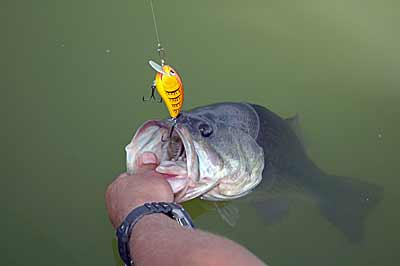
Let’s talk sound. In my box, I carry squares that have rattles and others that don't. This is something that will differ from day-to-day. I had had situations when fishing off-colored waters or when the bass were buried up in the cover that you had to have a bait with rattles to generate strikes. Then, on the other hand, I have faced situations where they just wanted a bait without rattles. This is a prime example of why you keep both type baits on your deck. You never know what will make a bass strike that day, and by carrying both baits, you'll be covered.
One more point about sound is to stock a few different brands of baits when it comes to sound. Different companies equip their square bills with sound that will differ from company to company. Use this to your advantage. Pick a few different brands of baits to give you an excellent variety to pick from. This will pay big dividends when bites get extra tough to offer the bass more options helping you generate strikes. I have seen on different days that it will come down to one company’s baits over another because of sound.
Square Bill Colors
Stock your box with square bill colors that match the forage in your waters. For me, the number one color I stock is a couple of different bluegill patterns. I'll also add a couple of different crawfish colors to my mix and a few general shad colors to cover forage in my waters.
I'll also add a few brighter colors that will stand out to get noticed for use when fishing in stained to dirty water conditions. Chartreuse/black and Neon bluegill are two examples of brighter colors that I stock. These are colors that will get noticed right away once the bass track down the sound from the rattles or the movement of the bait. For example, a bass in dirty water conditions or a bass coming out of cover to meet a square bill that is making contact with the weeds overhead will be able to quickly pick up this bait faster than a toned-down colored square bill.
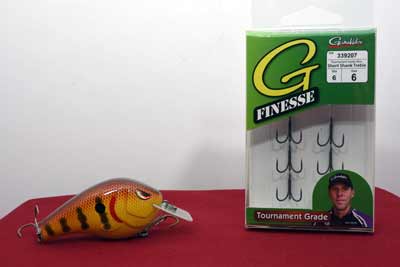
Hook Choices
When it comes to square bills, there will be times when a bass can zero in on a bait and choke it, but most of the time, the bait will hook the bass outside of the mouth. Make sure that your hooks are sharp to put more odds in your favor. Dull hooks will only decrease your hook-up ratio.
If you're fishing your bait in and around rocks, you need to pay better attention to your hooks during your day on the water. Take the time to check your hook sharpness a couple of times during the day and touch up your hooks when needed.
If I want to arm my crankbaits better, I carry an assortment of Gamakatsu extra-wide gap treble hooks in my hook box. This increases my hook-up ratio and bass over the side of the boat. At the same time, I also include this little trick. I carry some red hooks in this mix to change out when fishing in dirty water conditions. By changing my belly hook to a red hook, I increase my hook-up ratio in dirty water and cover conditions because it gives the bass a point to focus on when it strikes. I have noticed an improvement in hookups when making this minor adjustment.
Square Bill Equipment
Depending on the cover situation, I use two rod and reel setups for fishing my square bills. If I'm fishing in open water conditions, I'll opt to use a 7’4” Denali Attax crankbait rod teamed with a 5.1:1 gear ratio Lew’s BB-1 reel, filled with 12lb Sunline Crank FC line. I pick the longer rod setup when I'm fishing these areas because of added casting distance and better hooking power.

If I'm working targets onshore, I'll opt to fish a 7ft Denali Attax cranking rod that is teamed with a 5.1:1 gear ratio Lew’s BB-1 reel, spooled with 10lb or 12lb Sunline Crank FC. My reasoning for going with a shorter rod is casting accuracy. I can hit my targets better with a shorter rod than with a longer one.
One more note, I'll carry a backup reel that is spooled with either 14lb or 16lb Crank FC to use for depth control when fishing square bills over shallower cover. This higher line choice will limit the square bill's depth, increasing my catch numbers by not getting fouled as much, making my day more productive.
Keys To Fishing Square Bills During Spring
One of the biggest keys when fishing a square bill is to contact the cover you're fishing. Be it weeds or hard bottom (rocks). You'll generate more strikes if the square bill contacts the cover or areas you're fishing. Sometimes this can be a fine line, making your bait hit the cover and not getting hung up or fouled in the process. The better you can get your presentation dialed-in to make contact and stay clean, the more strikes you'll generate during your day of fishing.
When it comes to retrieves, experiment to see what the bass want. Two options to try are a steady retrieve and a stop-and-go. Let the bass tell you what they prefer. There will be days that one will work better than the other. So make sure you give the bass a chance to let you know.
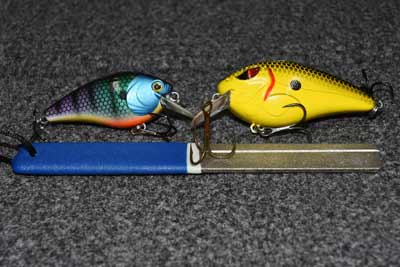
On days when the bass seem reluctant to strike, make your pause longer when stopping your bait. I had had days when you could just use a stop-and-go retrieve when it made contact with the cover. I also had days when I needed to pause my bait for 2- to 3-seconds to generate a strike. Some of this will relate to the conditions you're fishing. If you're fishing on a day when the water temperatures are rising, your pause can be shorter in duration.
On the other side, if you're fishing during cold front conditions, try to slow down your retrieve speed and make your pauses longer. This adjustment in your presentation may entice the bass to strike. Use this to your advantage in helping you to trigger bites and put more bass in your boat.
Pay attention and let the bass tell you if they want to sound or not. At first, use your instincts to match your square bill choices to the conditions, but also play the other side when it comes to rattles or non-rattles baits. I have had days that it went either way. There have been times I was using a bait that had rattles (sound) because conditions called for it, but that did not always work out, as the top bait of that day turned out to be a non-rattle square bill.
My point here is if you're struggling to generate bites, don't be shy to go against the grain and try to see if other options work. When it comes to bass fishing, nothing is set in stone. When you're struggling to get bites, open the square bill box and start to experiment to see what you can make work. You can take a day where you're struggling to get bites and turn it into a day when you start to catch fish by making adjustments.
I hope these square bill strategies help you catch more bass this Spring. Start your day with the proven points and adjust from there as the day goes on. Some days will follow the things that we have laid out, but I can guarantee there will also be days on the other side of this coin. But I guess that's why they call it "fishing" instead of "catching.
BassResource may receive a portion of revenues if you make a purchase using a link above.


